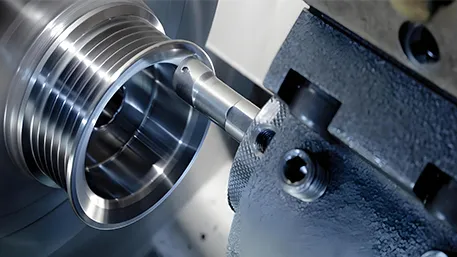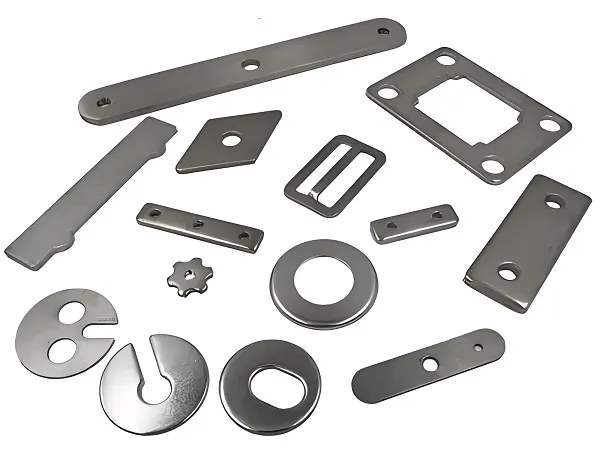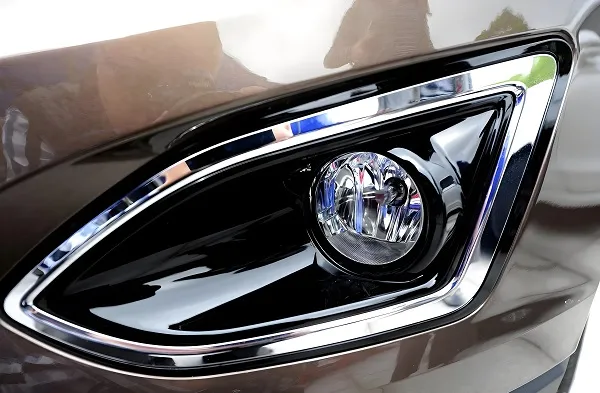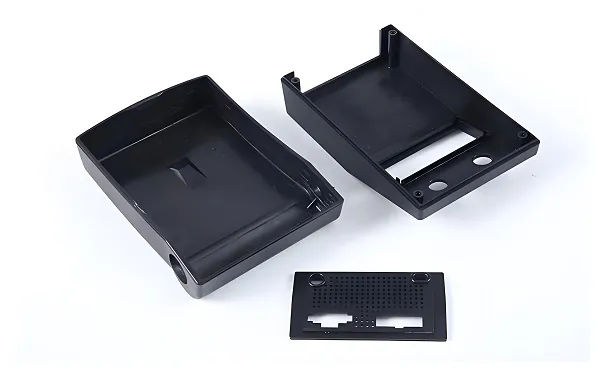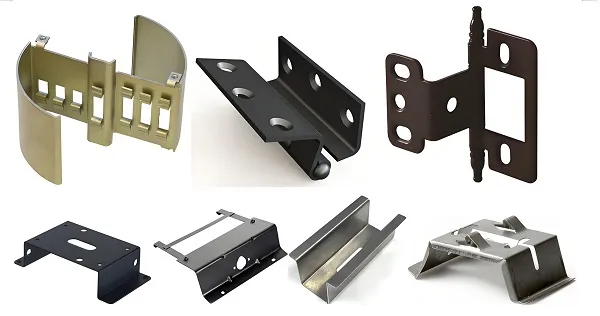
- Core Definition and Key Characteristics
- Core Technical Support: The Underlying Logic of Achieving “Precision”
- Main Service Types: Classified by Machining Methods and Requirements
- Applicable Industries and Typical Application Scenarios
- Core Advantages: Value Comparison with Traditional Machining
- Key Factors for Selecting a Service Provider
- Frequently Asked Questions (FAQ)
- Detailed Explanation of Core Technical Processes in Precision CNC Machining
1. Core Definition and Key Characteristics
1.1 In-depth Definition
1.2 Key Characteristics (vs. Conventional CNC Machining)
|
Feature Dimension
|
Precision CNC Machining Services
|
Conventional CNC Machining
|
|
Tolerance Range
|
±0.001mm–±0.01mm (supports ultra-precision needs)
|
±0.01mm–±0.1mm
|
|
Surface Roughness (Ra)
|
Up to 0.02μm–0.8μm (mirror-finish machining)
|
1.6μm–6.3μm
|
|
Batch Consistency
|
Coefficient of variation < 0.5% (for 1,000-unit batches)
|
Coefficient of variation 1%–3%
|
|
Material Adaptability
|
Supports hard-to-machine materials (titanium alloys, ceramics, superalloys)
|
Focuses on easy-to-machine materials (aluminum, steel, plastics)
|
|
Quality Control
|
Full-process inspection (first-piece CMM inspection + in-process sampling)
|
Only final inspection or key dimension inspection
|
2. Core Technical Support: The Underlying Logic of Achieving “Precision”
2.1 High-Precision CNC Equipment
- Core Configuration: Mainstream equipment features 3–5-axis linkage, equipped with high-rigidity machine beds (e.g., cast iron + granite composite beds) and imported servo motors (Yaskawa, Japan; Siemens, Germany). Positioning accuracy can reach ±0.001mm (e.g., Haas UMC-750 5-axis machining center, with repeatability of ±0.0005mm), and vibration is controlled within 0.002mm.
- Specialized Equipment Types: For ultra-precision needs, “ultra-precision CNC lathes” (e.g., Mikron HSM 400, Switzerland) and “slow-wire EDM machines” (accuracy ±0.0005mm) are deployed to address machining challenges of micro-parts (e.g., medical probes).
2.2 CAM Software and Path Optimization
- Relies on professional CAM software (e.g., Mastercam 2025, GibbsCAM) for “high-precision path planning,” supporting “residual height optimization” (minimum residual height 0.001mm) and “adaptive feed rate” (real-time speed adjustment based on material hardness) to reduce tool impact and wear during cutting.
- Key Technology: “High-Speed High-Precision (HSM) machining” algorithm maintains path deviation < 0.0008mm even at spindle speeds of 10,000–20,000 RPM, suitable for machining “complex precision CNC components.”
2.3 Precision Tools and Cooling Systems
- Tools: Diamond (PCD/SCD) and ultra-fine grain carbide tools (e.g., Kyocera CA6525, Japan) are used, with tool runout controlled within 0.001mm. Specialized tools for titanium alloy machining have a service life of 50–80 hours (vs. only 10–15 hours for conventional tools).
- Cooling: A “mist lubrication + cryogenic cooling” composite system (e.g., -10°C to 5°C cryogenic mist) is adopted to avoid thermal deformation during machining (e.g., thermal deformation of precision aluminum alloy parts can be controlled within 0.002mm), suitable for “heat-sensitive precision CNC machining.”
2.4 Full-Process Inspection Technology
- First-Piece Inspection: Coordinate Measuring Machines (CMMs, e.g., Zeiss CONTURA G3) are used for 3D dimensional scanning with an accuracy of ±0.0005mm, ensuring the first piece meets drawing requirements.
- In-Process Inspection: Onboard laser probes (e.g., Renishaw RMP60) monitor tool wear and part dimensional deviation in real time, automatically stopping the machine for adjustments if deviations exceed limits.
- Final Inspection: For high-demand services (e.g., medical parts), “optical profilometers” are used to inspect surface micro-topography, ensuring no micro-defects.
3. Main Service Types: Classified by Machining Methods and Requirements
3.1 Classified by Machining Processes
3.1.1 Precision CNC Milling Services
- Applicable Parts: Complex 3D structural components (e.g., aerospace engine blades, mold cavities), supporting 3–5-axis linkage machining to achieve integrated machining of multiple features (curved surfaces, hole systems, threads).
- Long-Tail Keyword Link: “5-axis precision CNC milling services” – for irregular parts (e.g., turbine disks), multi-sided machining is completed in a single setup, reducing clamping errors (errors can be minimized to within ±0.003mm).
3.1.2 Precision CNC Turning Services
- Applicable Parts: Cylindrical and conical parts (e.g., medical needles, hydraulic valve cores), supporting “turning + milling composite machining” (e.g., Mazak Integrex i-500 composite lathe). It can machine parts with diameters ranging from 0.1mm to 500mm, with roundness error < 0.0005mm.
- Typical Application: “Precision CNC turned components for automotive” (e.g., fuel system valve cores), requiring a tolerance of ±0.002mm.
3.1.3 Ultra-Precision EDM Services
- Application Scenarios: Machining of hard-to-cut materials (e.g., cemented carbide, ceramics) or micro-features (e.g., 0.05mm micro-holes). It removes material via high-frequency electrical discharge between the tool and workpiece, with no physical cutting force to avoid part deformation.
- Precision Index: Machining accuracy ±0.0005mm, surface roughness Ra 0.02μm, suitable for “micro-precision CNC machining” needs.
3.2 Classified by Customization Requirements
3.2.1 Low-Volume Precision Customization Services
- Features: Supports low-volume production (1–100 units) to quickly respond to R&D needs (e.g., aerospace prototypes, medical device samples). Lead time is 3–7 days, with flexible process adjustments.
- Long-Tail Keyword: “Custom precision CNC components manufacturing” – provides one-stop services from design optimization to machining based on customers’ unique drawings.
3.2.2 High-Volume Precision Mass Production Services
- Features: Suitable for mass production (1,000+ units), improving efficiency via “automated loading/unloading systems (e.g., robots + magazines)” and ensuring batch consistency with specialized fixtures. Defect rate is < 0.1%.
- Typical Case: “Precision CNC machining for electronics components” (e.g., 5G base station filter housings), requiring tolerance stability within ±0.005mm during mass production.
4. Applicable Industries and Typical Application Scenarios
4.1 Aerospace Industry
- Core Requirements: Parts must withstand high temperatures and pressures with strict tolerances (within ±0.005mm), primarily using materials such as titanium alloys and superalloys (e.g., Inconel 718).
- Typical Application: “Aerospace precision CNC components” (e.g., turbine blades machined via 5-axis milling, aircraft structural parts via combined precision milling and turning), complying with the AS9100 aerospace quality standard.
4.2 Medical Device Industry
- Core Requirements: Biocompatibility (e.g., titanium alloys, pure titanium), burr-free surfaces (to avoid tissue damage), and high precision (±0.001mm), complying with the ISO 13485 medical certification.
- Typical Application: “Precision CNC machined medical implants” (e.g., artificial joint prostheses with surface roughness Ra 0.8μm, dental implants with thread precision ISO 4H).
4.3 High-End Automotive Manufacturing
- Core Requirements: High stability for powertrain and autonomous driving parts, with tolerances of ±0.002mm–±0.01mm. Materials are mainly aluminum alloys and high-strength steel.
- Typical Application: “Precision CNC machining for automotive powertrain” (e.g., engine crankshafts via precision turning + grinding, transmission gears via 5-axis milling).
4.4 Electronics and Semiconductor Industry
- Core Requirements: Micro-parts (0.1mm–10mm) and high surface quality (Ra < 0.1μm) for semiconductor equipment and 5G products.
- Typical Application: “Semiconductor precision CNC parts” (e.g., ceramic wafer carriers machined via ultra-precision EDM, 5G filter cavities via precision milling with dimensional tolerance ±0.003mm).
4.5 Mold and Fixture Industry
- Core Requirements: High precision (±0.001mm) and mirror-finish surfaces (Ra 0.02μm) for mold cavities to ensure consistency of molded parts.
- Typical Application: “Precision CNC machined injection molds” (e.g., mobile phone housing mold cavities), achieving complex curved surfaces and high gloss via 5-axis milling + EDM.
5. Core Advantages: Value Comparison with Traditional Machining
5.1 Precision and Consistency Advantages
- Traditional Machining: Relies on operator experience, with large tolerance fluctuations (±0.1mm–±0.5mm) and significant differences between batch parts.
- Precision CNC Services: Digital control reduces tolerance fluctuations to < ±0.005mm, with a dimensional coefficient of variation < 0.5% for 1,000-unit batches, minimizing subsequent assembly errors (e.g., assembly clearance of aerospace parts can be controlled within 0.002mm).
5.2 Material Adaptability Advantages
- Traditional Machining: Struggles with hard-to-cut materials (titanium alloys, ceramics), often leading to tool breakage and part deformation.
- Precision CNC Services: Specialized tools (e.g., diamond tools), cryogenic cooling, and EDM technology enable machining of materials with hardness > HRC 60, with part deformation < 0.002mm (e.g., machining of ceramic medical probes).
5.3 Efficiency and Cost Advantages
- Traditional Machining: Complex parts require multiple processes and setups, with long lead times (e.g., 3–5 days for one turbine blade) and high defect rates (10%–20%).
- Precision CNC Services: 5-axis linkage enables “multi-process machining in one setup,” shortening lead times to 1–2 days. Defect rates are < 0.1%, and long-term mass production reduces overall costs by 30%–50% (e.g., automotive part mass production).
5.4 Design Freedom Advantages
- Traditional Machining: Cannot easily machine complex curved surfaces or micro-features (e.g., 0.05mm micro-holes).
- Precision CNC Services: CAM software-optimized paths enable machining of integrated parts with “free-form surfaces + micro-holes + threads” (e.g., medical minimally invasive surgical tools), supporting more innovative product designs.
6. Key Factors for Selecting a Service Provider
6.1 Equipment and Technical Capability
- Equipment Configuration: Prioritize providers with “5-axis machining centers (e.g., DMG MORI, Germany), ultra-precision EDM machines (e.g., AgieCharmilles, Switzerland), and CMMs (Zeiss/ Hexagon)” to ensure a closed loop of machining and inspection precision.
- Technical Team: Verify if engineers have “aerospace/medical industry machining experience” and can provide process optimization suggestions (e.g., material selection, structural simplification).
6.2 Quality System and Certification
- Essential Certifications: AS9100 for aerospace, ISO 13485 for medical devices, and ISO 9001 for general manufacturing.
- Quality Control Process: Confirm the availability of “first-piece inspection – in-process sampling – final inspection” records and the provision of inspection reports (e.g., CMM reports, surface roughness reports).
6.3 Industry Experience and Cases
- Prioritize providers with “target industry experience” (e.g., selecting ISO 13485-certified providers with implant machining experience for medical parts).
- Case Review: Request machining cases of similar parts (e.g., “Have you machined 0.1mm-diameter medical needles?”) to verify actual precision capabilities.
6.4 Lead Time and After-Sales Service
- Lead Time: 3–7 days for low-volume R&D parts and 15–30 days for high-volume production. Confirm if the provider has emergency production capacity (e.g., 24-hour response for rush orders).
- After-Sales Service: Check if “part performance feedback tracking” is offered, if free rework is provided for precision deviations, and if process improvement suggestions are available.
7. Frequently Asked Questions (FAQ)
Q1: What tolerance range can precision CNC machining services achieve?
Q2: Which materials are suitable for manufacturing parts via precision CNC machining services?
Q3: What is the difference between the service processes for low-volume precision customization and high-volume mass production?
Q4: How to verify a service provider’s precision machining capabilities?
8. Detailed Explanation of Core Technical Processes in Precision CNC Machining
8.1 Micro-Precision Milling Process
8.1.1 Process Principle
8.1.2 Core Equipment and Parameters
- Equipment: Specialized micro-precision CNC milling machines (e.g., Kern Microtechnic Evo, Switzerland), equipped with aerostatic spindles (vibration < 0.0001mm) and nano-level servo systems, with positioning accuracy ±0.0005mm.
- Tools: Ultra-fine grain carbide tools (e.g., Sumitomo Electric 0.1mm end mill, Japan) or diamond-coated tools, with tool runout controlled < 0.0003mm.
- Key Parameters: Spindle speed 50,000 RPM, feed rate 50mm–200mm/min, cutting depth 0.001mm–0.01mm.
8.1.3 Precision and Surface Quality
- Dimensional Tolerance: ±0.0005mm–±0.001mm;
- Surface Roughness: Ra 0.02μm–0.1μm (mirror finish);
- Geometric Tolerance: Flatness < 0.0005mm/10mm, perpendicularity < 0.001mm.
8.1.4 Application Scenarios
- Part Types: Medical minimally invasive probes (e.g., 0.5mm-diameter biopsy needle tips), semiconductor chip pins, micro-sensor housings;
- Materials: Low-to-medium hardness materials (6061-T6 aluminum alloy, TC4 titanium alloy, PEEK engineering plastic).
8.2 Slow-Wire EDM Process
8.2.1 Process Principle
8.2.2 Core Equipment and Parameters
- Equipment: High-precision slow-wire EDM machines (e.g., GF Machining Solutions AgieCharmilles Cut P 800, Switzerland), supporting 4-axis linkage, with repeatability ±0.0002mm.
- Electrode Wire: Brass wire (diameter 0.15mm–0.25mm for general precision) or molybdenum wire (diameter 0.1mm for ultra-precision).
- Discharge Parameters: Peak current 1A–5A, pulse width 0.1μs–1μs, machining efficiency 5mm²/min–20mm²/min.
8.2.3 Precision and Surface Quality
- Dimensional Tolerance: ±0.0002mm–±0.0005mm;
- Surface Roughness: Ra 0.01μm–0.05μm (no post-polishing required);
- Key Advantage: No cutting force, capable of machining materials with hardness > HRC 60 (e.g., cemented carbide, high-speed steel).
8.2.4 Application Scenarios
- Part Types: Ceramic mold cavities (e.g., 0.05mm micro-hole molds), aerospace engine blade cooling holes (diameter 0.2mm–0.5mm), medical scalpel blades (thickness 0.1mm);
- Materials: Hard-to-cut materials (WC-Co cemented carbide, zirconia ceramics, Inconel 718 superalloy).
8.3 Ultra-Precision Grinding Process
8.3.1 Process Principle
8.3.2 Core Equipment and Parameters
- Equipment: Ultra-precision grinding machines (e.g., NACHI Ultra-Precision Grinder, Japan), equipped with hydrostatic guides (friction coefficient < 0.0001) and high-precision spindles (radial runout < 0.0001mm).
- Grinding Wheels: Diamond grinding wheels (abrasive size 0.5μm–1μm) or cubic boron nitride (CBN) grinding wheels, with resin or ceramic binders.
- Key Parameters: Wheel speed 3,000 RPM–6,000 RPM, workpiece speed 50 RPM–100 RPM, feed rate 1mm/min–5mm/min.
8.3.3 Precision and Surface Quality
- Dimensional Tolerance: ±0.0001mm–±0.0005mm;
- Surface Roughness: Ra 0.005μm–0.02μm (near optical mirror finish);
- Geometric Tolerance: Roundness < 0.0001mm (cylindrical grinding), flatness < 0.0002mm/200mm (surface grinding).
8.3.4 Application Scenarios
- Part Types: Optical lens molds (e.g., mobile phone camera lens molds), precision bearing inner/outer rings (diameter < 10mm), aerospace precision shafts;
- Materials: High-precision requirement materials (304/316 stainless steel, TC4 titanium alloy, optical glass).
8.4 Cryogenic-Assisted Precision Machining Process
8.4.1 Process Principle
8.4.2 Core Equipment and Parameters
- Equipment: Modified conventional precision CNC machines (e.g., DMG MORI DMU 50), equipped with cryogenic media injection systems (nozzle diameter 0.5mm–1mm, injection pressure 0.5MPa–1MPa).
- Tools: PCD diamond tools (for non-ferrous metals) or ultra-fine grain carbide tools (for ferrous metals).
- Key Parameters: Cryogenic media flow rate 5L/h–10L/h, injection distance 5mm–10mm, spindle speed 3,000 RPM–8,000 RPM, feed rate 100mm–300mm/min.
8.4.3 Precision and Surface Quality
- Dimensional Tolerance: ±0.001mm–±0.002mm (thermal deformation < 0.0005mm);
- Surface Roughness: Ra 0.05μm–0.1μm;
- Key Advantage: No cutting fluid contamination, suitable for medical and food-grade part machining.
8.4.4 Application Scenarios
- Part Types: Medical titanium alloy implants (e.g., artificial joint stems), aerospace superalloy components (e.g., Inconel 718 turbine disks), food machinery stainless steel parts;
- Materials: Titanium alloys (TC4, TA2), superalloys (Inconel 718, Hastelloy C276), stainless steel (316L).
8.5 Core Principles for Process Selection
- Select by Part Features: Choose micro-precision milling or slow-wire EDM for micro-features (< 0.1mm); select ultra-precision grinding for high-precision surfaces/cylinders.
- Select by Material Hardness: Choose micro-precision milling for materials with hardness < HRC 30; select slow-wire EDM for materials with hardness > HRC 60; choose cryogenic-assisted machining for heat-sensitive materials.
- Select by Surface Quality: Choose slow-wire EDM or ultra-precision grinding for Ra < 0.05μm; select micro-precision milling or cryogenic-assisted machining for Ra 0.05μm–0.1μm.

